Share Audio on Google Meet: Step-by-Step Guide
July 15, 2024
July 15, 2024
June 12, 2025
June 12, 2025
Sharing audio enhances your Google Meet calls and presentations. Whether you want to share a video, a song, or an audio file, we've got you covered! This guide will help you understand how to share audio on Google Meet using different methods.
How to Share Audio on Google Meet Using a Chrome Tab
Follow these steps to share audio on Google Meet via a Chrome tab:
- Open Chrome: Open the Chrome browser and go to the tab with the audio you want to share.
- Join Google Meet: Enter your Google Meet session.
- Present Now: Click the "Present Now" button at the Meet window's bottom right corner.
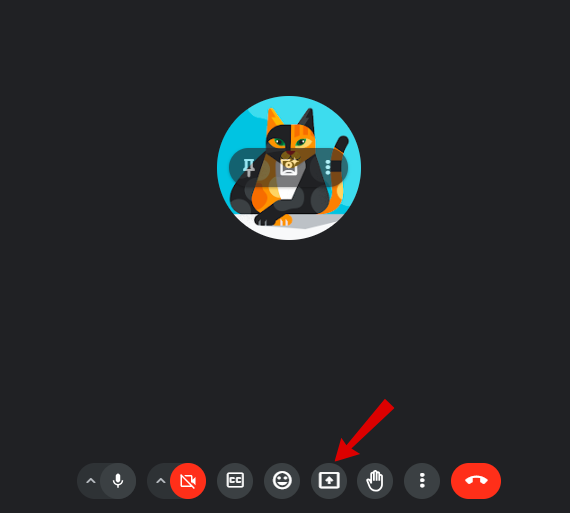
- Select Chrome Tab: Choose "Chrome Tab" from the available options.
- Share Tab Audio: A new window will open, showing all your open Chrome tabs. Select the tab with your audio and check the "Also share tab audio" at the bottom left. Then, click "Share".

How to Share Entire Screen with Audio on Google Meet
You can also share your entire screen during a Google Meet call:
- Join Google Meet: Enter your Google Meet session.
- Present Now: Click the "Present Now" button at the bottom right.
- Select Entire Screen: Choose "Your entire screen" from the options.
- Share Screen: A new window will appear showing your screen. Select the screen you want to share and click "Share."
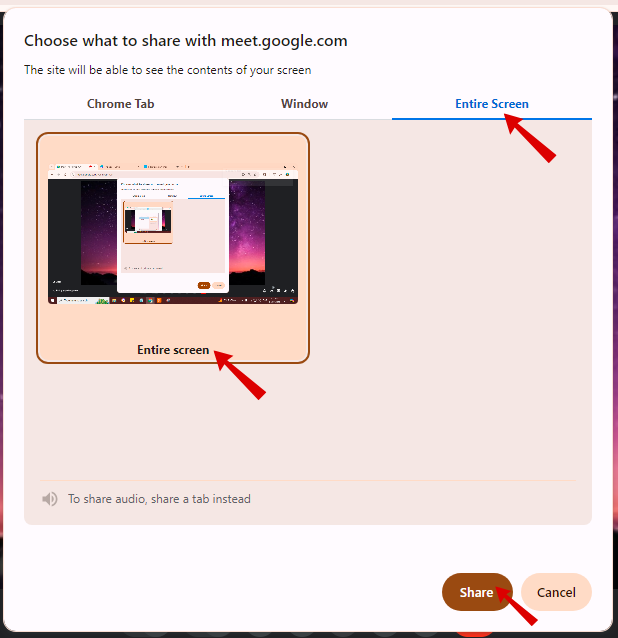
Unlike a Chrome tab, sharing the entire screen has no specific "Share Audio" box. To ensure audio is included:
- Play the audio on your screen before sharing.
- Adjust your computer's audio to a level where participants can hear.
Do these best practices so you can easily share audio during your Google Meet sessions, ensuring clear communication and effective collaboration:
- Ensure a strong Internet connection: A stable Internet connection will allow smooth Google Meet calls without interruptions.
- Close unnecessary applications: This reduces the load on your system, helping to maintain audio quality.
- Test beforehand: Conduct a quick test to ensure everything works smoothly.
How to Share Video Files with Audio on Google Meet
Another way to foster engagement during your Google Meet meetings is to share video files with audio. Here’s how:
- Open Chrome: Begin by opening the Google Chrome browser.
- Drag and Drop: You can drag and drop your video file into a new tab in Chrome. This action will automatically play the video in the browser.
- Prepare for Sharing: Ensure your video is ready to play before sharing it on Google Meet.
- Share video with audio: Follow the steps on how to share audio using a Chrome tab.
How to Fix Glitches and Issues
If you encounter any of these glitches or issues while sharing a video file with audio in Google Meet, try these quick solutions:
- Audio Not Playing: Check the "Also share tab audio" box. If unchecked, participants will not hear the video's sound.
- Video Lagging: Close unnecessary applications and tabs to free up system resources, improving video playback.
- Quality Issues: Reduce the video resolution in Chrome settings if the video quality is poor or lagging.
- System Performance: Ensure your computer meets the requirements for running both Google Meet and Chrome smoothly.
Differences Between Windows and Mac Devices
Sharing video files with audio during Google Meet meetings or presentations can vary depending on your device. Here are some helpful details when you do it on Windows or Mac:
Windows Devices:
- Direct Sharing: Windows users can directly share video files from their computer using Google Chrome.
- System Volume: Set the system volume and adjust the volume settings in the taskbar if needed.
Mac Devices:
- Chrome Dependency: Mac users must play video files through Chrome for audio sharing since it doesn't support direct audio sharing from other applications.
- System Preferences: Check the sound settings in System Preferences to ensure the correct audio output and input devices are selected.
How to Share Online Videos with Audio
If you want to share online videos with audio during your Google Meet call, follow these steps:
- Open Google Chrome: Access the Google Chrome browser.
- Navigate to video: Go to the website hosting the video you wish to share, such as YouTube or Vimeo.
- Prepare the video: Load the video and pause it at the starting point you want to share.
- Share online video with audio: Follow the steps on how to share audio using a Chrome tab.

Advantages of Sharing Videos in Meetings
Here are some reasons why sharing video content on Google Meet can level up your Google Meet meetings:
- Engaging content: Videos can make meetings more dynamic and engaging than static presentations.
- Visual demonstrations: Videos are excellent for demonstrating products, processes, or tutorials.
- Break the monotony: Introducing videos can break the monotony of long meetings, keeping participants attentive.
- Immediate feedback: Sharing videos allows for real-time feedback and discussions, enhancing the collaborative aspect of meetings.
How to Show Audio in Google Meet
To ensure that audio is showing in your Google Meet sessions, select and configure your audio devices by following these steps:
- Open Google Meet settings: Click the Settings icon on the upper right side of your Google Meet home screen.
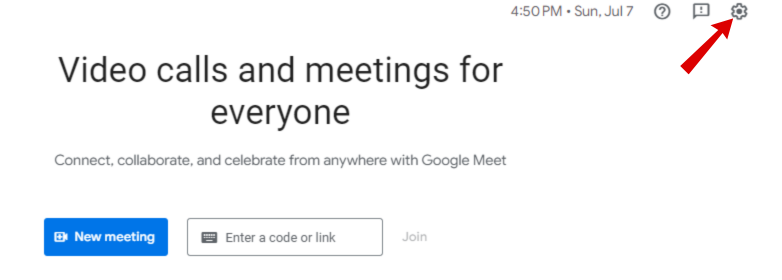
- Choose the correct microphone and speakers: Select the microphone and speakers you want to use from the dropdown menus. Test the microphone to ensure it's picking up sound.
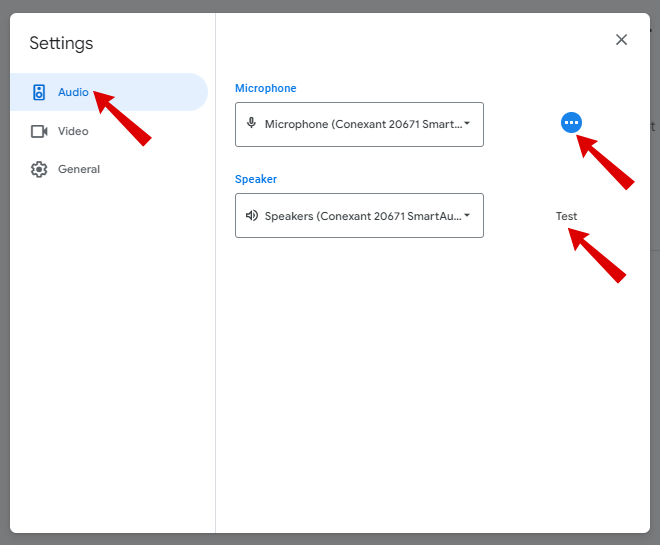
For a smooth Google Meet experience, test the audio before joining a meeting and ensure that your operating system and browser are current. If issues persist, use Google Meet's built-in troubleshooting tools to diagnose and fix problems.
Here are some ways to optimize audio quality:
- Use a high-quality microphone: Invest in a good-quality microphone for more transparent audio.
- Reduce background noise: Use noise-canceling headphones or sit in a quiet environment.
- Adjust microphone sensitivity: Lower the microphone sensitivity to reduce background noise.
- Use wired connections: Wired headphones and microphones often give better sound quality than wireless ones.
How to Use Another Device to Share Audio
Sometimes, sharing audio directly from your computer might work differently. In such cases, using a smartphone can be a handy alternative. Google Meet allows you to use your phone to share audio, which can be useful if you are facing issues with your computer's microphone or audio settings.
Here's how to do it:
During the Meeting:
- Click on “More Options” (three dots).
- Select "Use a phone for audio".
- Type in your phone number. Then, click “Call me”.
From the Green Room:
- Click “Join”.
- On the right, select “Use a phone for audio”.
- Type in your phone number. Then, click “Call me”.
Google Meet’s "Use a phone for audio" feature offers several benefits, including:
- Improved audio quality due to better microphones and speakers
- Increased mobility allows you to move around while staying engaged in the meeting
- A reliable backup option in case your computer's audio fails, ensuring uninterrupted connectivity.
Note, however, that this feature is only available to Google Workspace users and temporarily mutes your desktop's audio during the call.
How to Troubleshoot Audio Issues in Google Meet
Troubleshooting audio issues in Google Meet can help ensure your meetings run smoothly without interruptions. Here are some common reasons for audio problems and solutions that you can try to fix them:
- Disabled share audio: Sometimes, users need to remember to check the "Also share tab audio" when selecting a Chrome tab to present. Always enable this feature before sharing any tab.
- Browser settings: The browser might block sound sharing due to security settings. Make sure your version of Google Chrome is current to prevent compatibility issues.
- Audio source issues: The audio might play from an unsupported application outside of Chrome. Play audio directly on your computer to verify it's working. If not, check your device settings.
- Device connection problems: Headphones, speakers, or microphones might not connect correctly. To rule out hardware issues, use a different audio source, such as another pair of headphones or external speakers.
You may also do these steps for the correct device settings and connections:
- Check Audio Output Settings:
- For Windows: Go to Settings > System > Sound and select the correct output device.
- For macOS: Go to System Preferences > Sound and choose the suitable output device.
- Inspect Physical Connections: Securely plug in all cables.
- Reconfigure Sound Settings in Chrome:
- Open Chrome Settings.
- Go to Privacy and Security > Site Settings > Sound and ensure sound is enabled.
{{rt_cta_ai-convenience}}
How Tactiq Can Enhance Your Google Meet Experience
Tactiq is a powerful AI tool that integrates seamlessly with Google Meet, offering different features that make your meetings more efficient and productive. You can download and install Tactiq for free from the Chrome Web Store, and it will automatically join in your Google Meet calls.
Here are some ways how Tactiq can level up your meetings:
- Real-time transcription: Tactiq transcribes your Google Meet sessions live, so you don't have to take notes manually and can focus on the discussion.
- Meeting highlights: Highlight critical moments during the meeting directly in the transcript to quickly find important information later.
- Collaborative note-taking: Multiple users can add notes and comments in real time, enhancing collaboration and ensuring everyone can contribute.
- Searchable transcripts: Transcriptions are searchable, allowing you to quickly locate specific parts of the conversation.
- Integration with other tools: Tactiq integrates with other tools such as Google Drive, Slack, Trello, Asana, and CRM systems to store transcripts, send highlights, create tasks, and log meeting notes automatically.
Using Tactiq with Google Meet can significantly level up your virtual meetings. Its robust features for transcription, note-taking, and integration with other services offer a comprehensive solution for managing and utilizing meeting data.
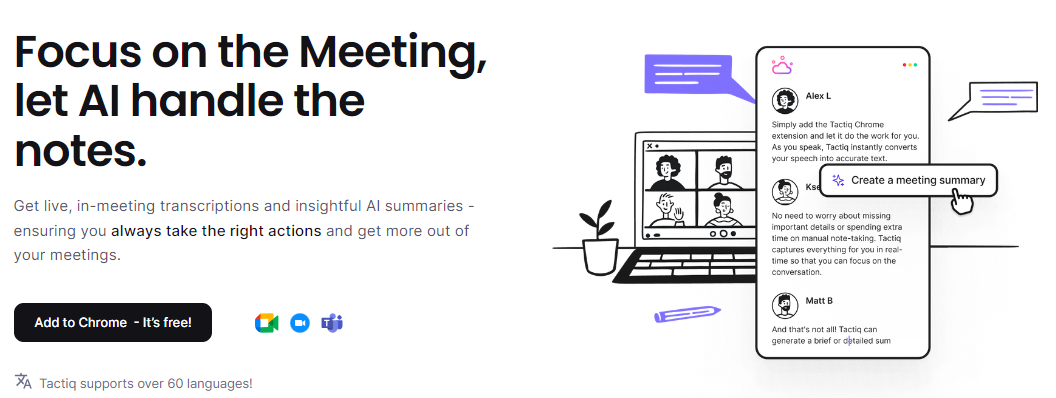
To share audio, open the Chrome tab with your audio, join your Google Meet, click 'Present Now,' select 'Chrome Tab,' choose the correct tab, and check 'Also share tab audio' before clicking 'Share.' This lets participants hear your audio clearly, making your presentations more engaging and interactive.
Close unnecessary applications and tabs to free up system resources, and ensure your internet connection is stable. You can also lower video resolution in Chrome settings and check that your computer meets Google Meet’s requirements. These steps help you maintain smooth playback and clear audio for everyone in the meeting.
Sharing videos makes meetings more dynamic and engaging, helps demonstrate products or processes visually, and breaks up long sessions to keep participants attentive. You also get immediate feedback and foster real-time collaboration, making your meetings more productive.
On Windows, you can share video files directly from your computer using Chrome and adjust system volume easily. On Mac, you must play video files through Chrome, and you should check System Preferences to select the correct audio devices. Knowing these differences ensures your audio sharing works smoothly, no matter your device.
Tactiq provides real-time transcription, highlights key moments, and enables collaborative note-taking during your meetings, so you don’t have to take manual notes. Its searchable transcripts and integration with tools like Google Drive and Slack help you quickly find and use meeting insights. You save time and boost productivity by letting Tactiq handle meeting documentation and follow-up tasks.
Want the convenience of AI summaries?
Try Tactiq for your upcoming meeting.
Want the convenience of AI summaries?
Try Tactiq for your upcoming meeting.
Want the convenience of AI summaries?
Try Tactiq for your upcoming meeting.


_Main.jpg)






